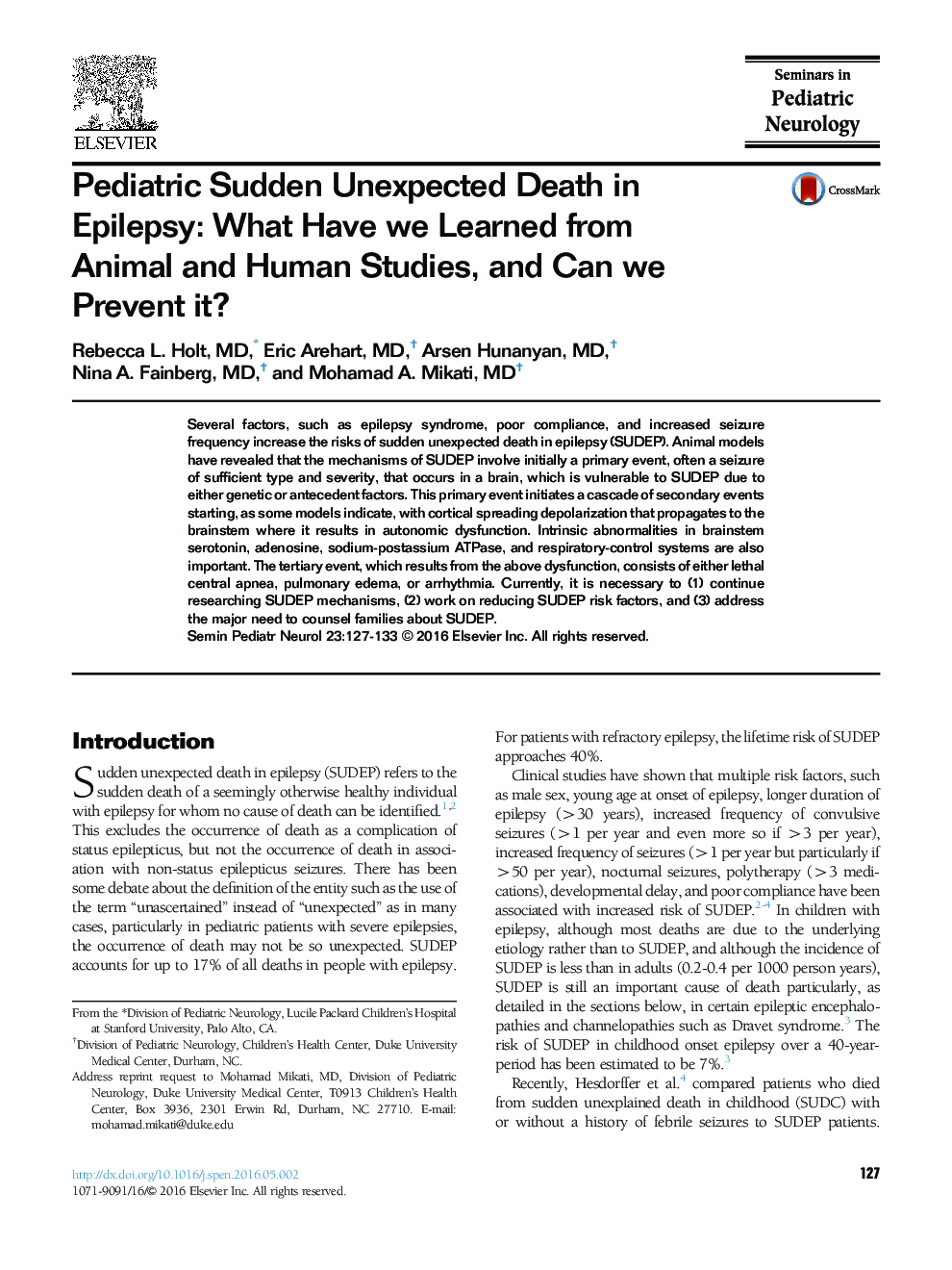| Article ID | Journal | Published Year | Pages | File Type |
|---|---|---|---|---|
| 3090754 | Seminars in Pediatric Neurology | 2016 | 7 Pages |
Several factors, such as epilepsy syndrome, poor compliance, and increased seizure frequency increase the risks of sudden unexpected death in epilepsy (SUDEP). Animal models have revealed that the mechanisms of SUDEP involve initially a primary event, often a seizure of sufficient type and severity, that occurs in a brain, which is vulnerable to SUDEP due to either genetic or antecedent factors. This primary event initiates a cascade of secondary events starting, as some models indicate, with cortical spreading depolarization that propagates to the brainstem where it results in autonomic dysfunction. Intrinsic abnormalities in brainstem serotonin, adenosine, sodium-postassium ATPase, and respiratory-control systems are also important. The tertiary event, which results from the above dysfunction, consists of either lethal central apnea, pulmonary edema, or arrhythmia. Currently, it is necessary to (1) continue researching SUDEP mechanisms, (2) work on reducing SUDEP risk factors, and (3) address the major need to counsel families about SUDEP.
